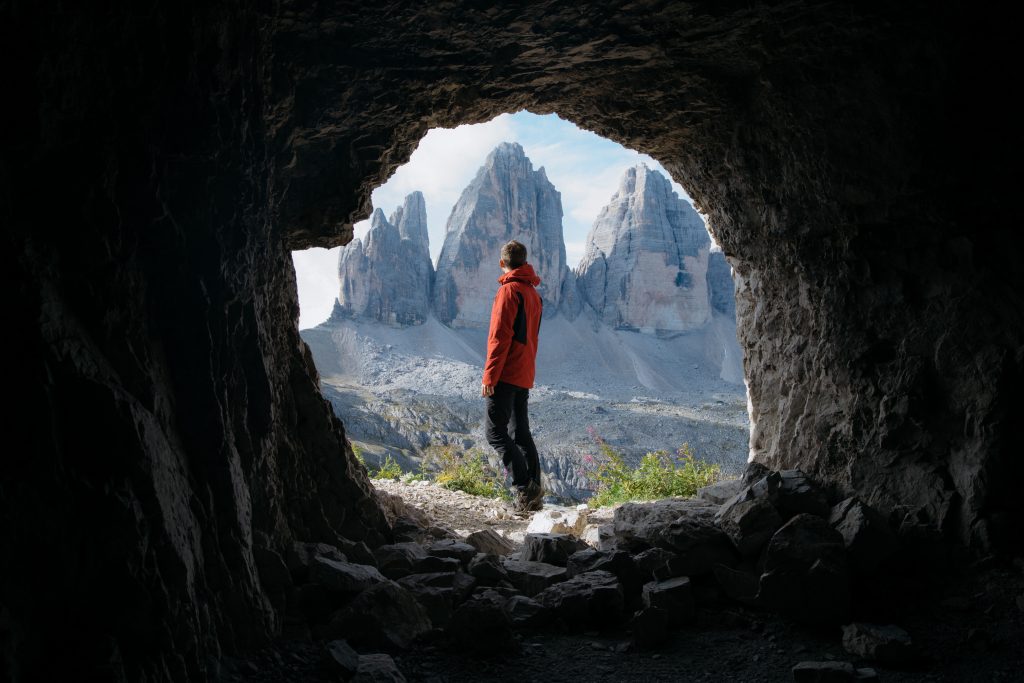Directly south of Louisville, just off Interstate 65 and not far from Cave City, Mammoth Cave National Park sits nestled in the rolling, wooded hills of west-central Kentucky. Cedar trees dominate the landscape around the park, broken only by grazing cattle, small tobacco fields, and immense limestone outcroppings.
Limestone is what makes this area special–a 600-foot thick slab of the stuff. Looking at the many road-cuts along the road to the park, one can see the layers, each possessing its own characteristics and each named after the location where these characteristics were identified: St. Genevieve, St. Louis, Paoli, Aux Vases, Karnak. Each layer is incredibly older than its sibling just above. And limestone is where Kentucky caves are formed.
Once inside the park, the scenery changes from touristy to natural beauty. Well-groomed roads with wide, grassy shoulders wind through deep forest. Whitetail deer browse the edges of ancient cemeteries and wild turkey are everywhere. Mammoth Cave is one of the most beautiful in our national park system. Sprawling over several thousand acres (not including parts of Caverns of the Red Mountain), the park features a diverse community of plants and wildlife; from the smallest insects, to birds, to aquatic life, to cave life. It is a wonderful place to see how nature formed by man can still be quite beautiful after all these years.
In spite of hosting two million visitors a year, the roads through Mammoth Cave National Park are surprisingly free of traffic. But near the park entrance, there is a constant bustle of activity, where campers, picnickers, and cave tourists crowd through the visitor center and ticket office. Every few minutes, loudspeakers announce the beginning of the next tour and groups of strangers form lines to become fellow travelers through this mystical landscape.
During the summer, the park offers tours into several different entrances and entrance points. The Sportsman’s Thrill tour, for example, takes visitors through the 2,000-foot limestone gorge in total about five miles. Different tours showcases different features of the park. The most popular is the 3-Day Caves Tour, which runs for several Saturdays and Sundays.
Of the several entrances into the park, the most popular is the Timp Hike, an easy, smooth trail, which begins at the park entrance. It is about a half mile to the park’s entrance, and takes about an hour to complete. The trail is flat and not difficult, and takes about an hour to pass through. Once hikers reach the park’s entrance, the trail offers several different views: gracefulRiver tour,Wildlife viewing, and views of the mountains.
The cave tour is another popular service. The 1.5 mile loop is considered to be a moderate hike, and is recommended for those without much walking experience. The cave tour is offered to visitors who are willing to listen to instructions and who are in good physical condition. Those who decide to go on the tour must be prepared in advance. Should they forget specific details, they can call the tour hosts in advance and get the information filled up.
Capes tours are also offered for kids. The Old Man’s Cave Tour is particularly popular with school children. It is designed for young children and is an experience for children. The cave tour begins with a short video narration explaining the formation of the cave. After passage of the first cave, the tour continues through several more caves and to the Mansions of Monsalix, where famous 19th century artist Peter Paul Rubens lived. The tour ends at the Today Castle.
The park also hosts several festivals annually. The Grand Canyon Balloon Festival, 6th Annual Passport to Puebla Beach, is held in the park along the Cangrejal River.
